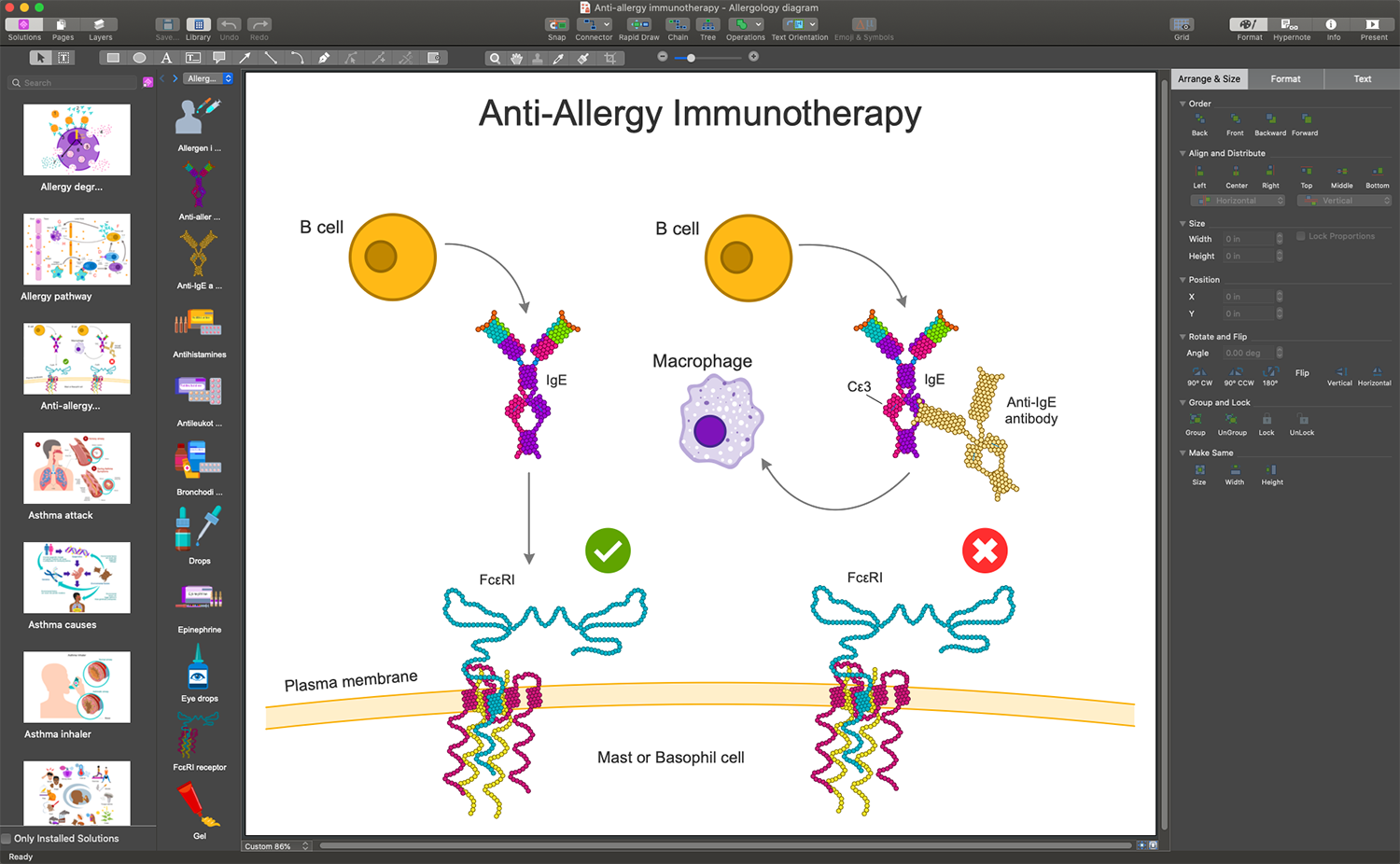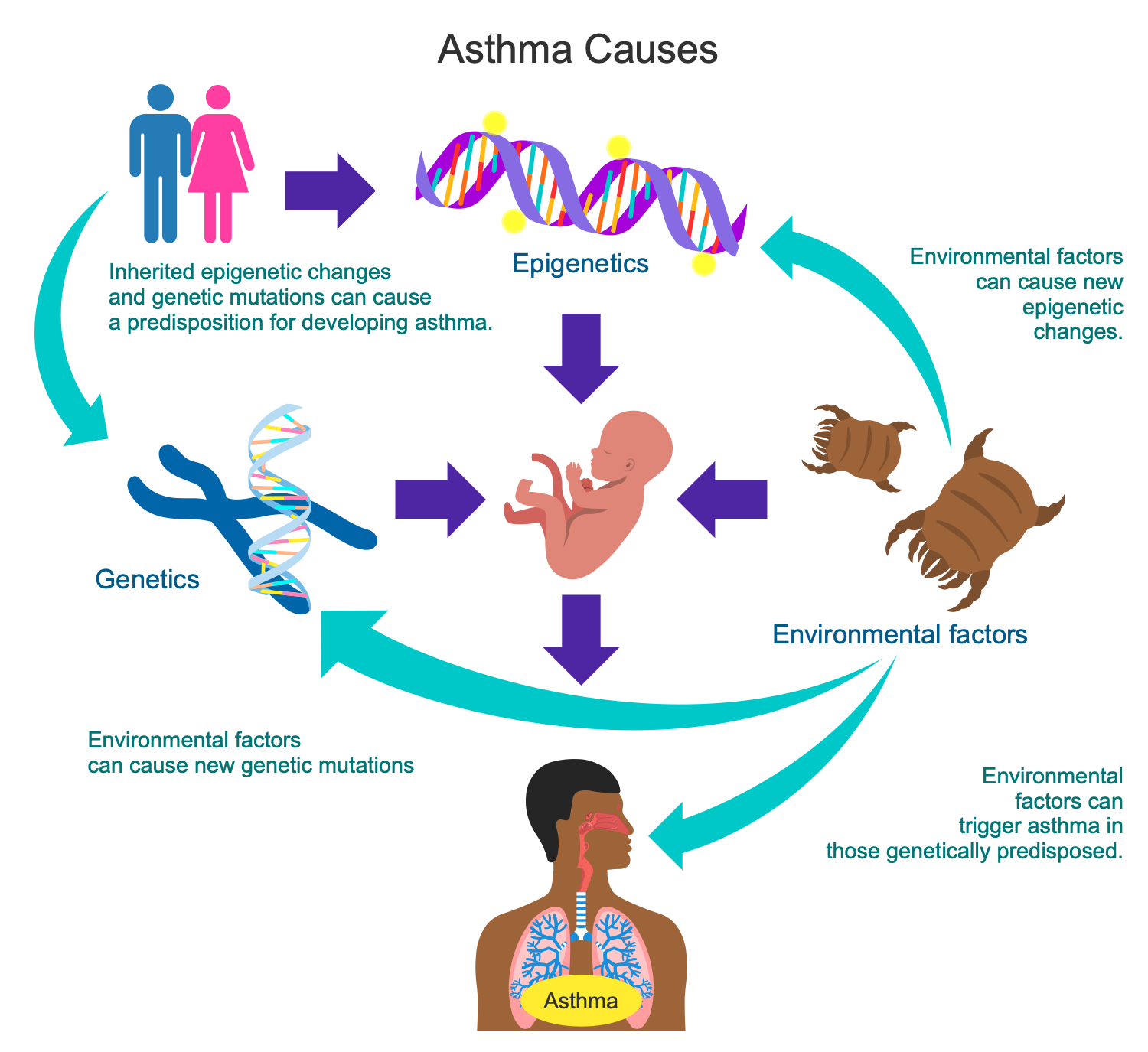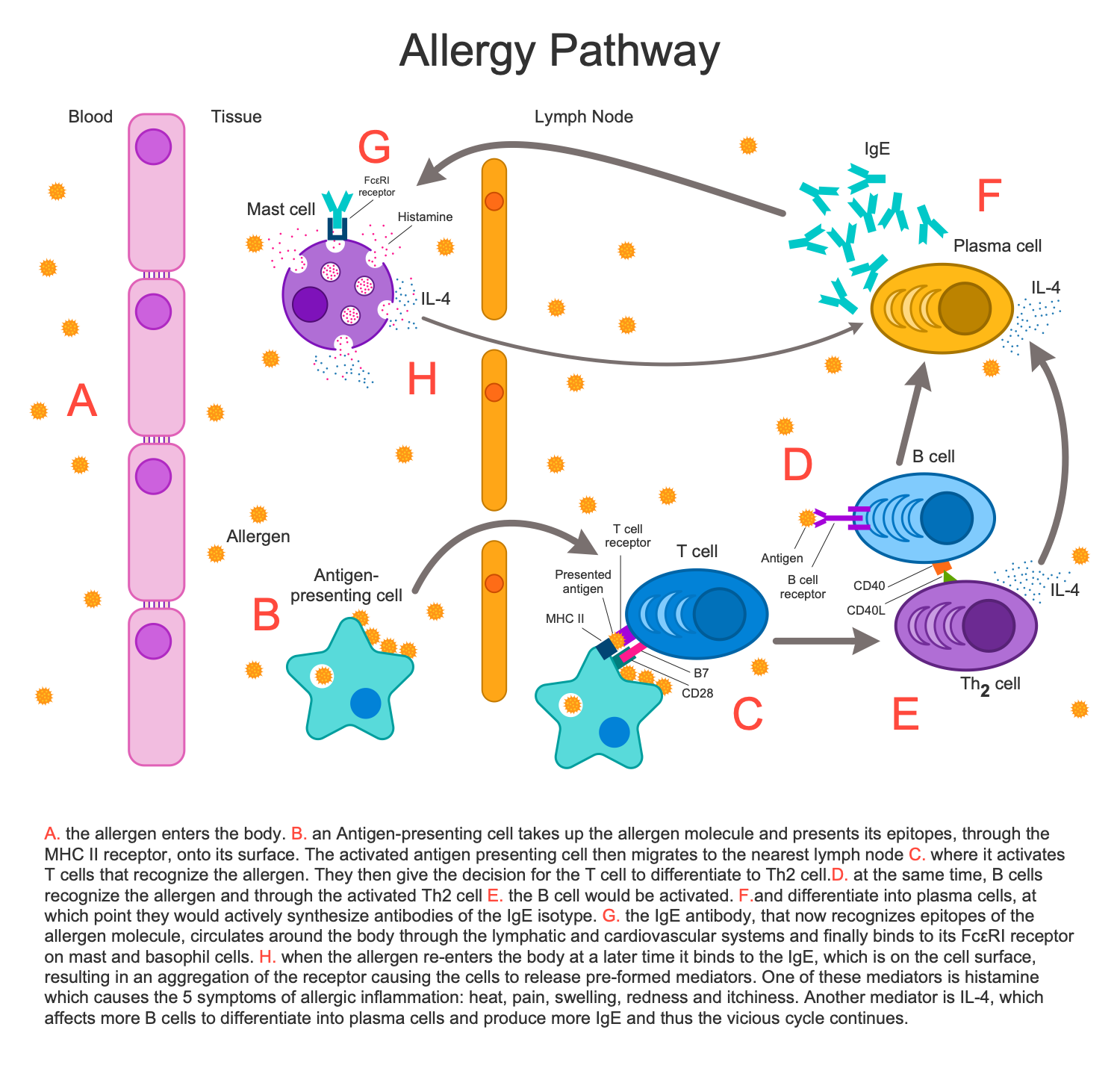Allergy
The "allergy" term derives from the Greek words allos (other) and ergon (work). This term was introduced by a Viennese pediatrician Clemens von Pirquet in 1906 when he noticed the specific symptoms of patients and detected them as a response to outside allergens. Pollen, certain foods, dust, animal fur, animal danders, medicines, pollen, plants, jewelry, latex, stings of insects, house dust, mold spores, cleaners, cigarette smoke, and much more substances are allergens for people with abnormal immune response or hypersensitivity to these products. However, for most people these products are harmless. Among the common manifestations of allergy are defined:
- food allergies
- atopic dermatitis
- hay fever
- hives
- angioedema
- allergic asthma
- anaphylaxis
The most severe is anaphylaxis appearing suddenly and able to cause death, it requires immediate medical aid.
The allergy is defined as hypersensitivity to a specific antigen and is one of the most common medical disorders. It is a type of immune reaction when the immune system responds exaggeratedly to harmless everyday substances. Normally, this reaction appears only at the entering malicious foreign microorganisms in order to produce specific proteins (antibodies) to fight them. Mast cells are the major players in allergic reactions, they capture and display immunoglobulin type E (IgE) binding to allergens. Mast cells contain granules with specific chemicals, including histamine. During contact with allergens, histamine is released and an allergic reaction develops.
Example 1. Asthma Causes
The allergy symptoms may differ according to the type and severity of the disease. A wide list of symptoms includes:
- bloodshot eyes
- watery eyes
- itchy rash
- hives
- sneezing
- runny nose
- nasal blockage
- cough
- wheezing
- dizziness
- shortness of breath
- anxiety
- nausea
- vomiting
- swelling of nose mucous membrane, face, eyes, and some others
Allergy with any symptoms is a great problem, it causes bad feelings and lost productivity.
There are separated immediate and delayed hypersensitivity allergic reactions. The immediate reactions are mediated by mast cells and T cells and occur within minutes or hours after allergen exposure. The delayed allergic reactions appear more than 24 hours after contact with allergen.
The diagnostics and identification of allergens are valuable for eliminating negative manifestations of allergy and its treatment. Typically, you can match the appearance of symptoms to the exposure of possible allergens, especially if it is a repetitive reaction. But the allergy tests will be more reliable and precise. There are applied skin tests and blood tests. Skin tests are executed by the introduction of allergens in a patient's skin by means of puncturing, pricking, scratching, or injecting. The reaction is evaluated fifteen minutes after exposure. Blood tests measure the allergen-specific IgE antibodies in a blood sample. The excess is washed away and the levels of IgE are determined.

Example 2. Allergy Diagrams Design in ConceptDraw DIAGRAM
As for allergy treatment, avoiding allergens is the first recommendation. A wide variety of medicines is available, typically they block the histamine receptors to decrease allergy symptoms. To treat allergies is used immunotherapy. The injections of antibodies or vaccinations with small doses of allergens are used, the doses are gradually increased.
ConceptDraw DIAGRAM vector design software enhanced with the Allergology solution from the Health area of ConceptDraw Solution Park is the best way to look into and illustrate key allergology and immunology issues. It supports in visualization the causes of allergy, key triggers, methods, technologies and instruments used to diagnose and treat allergies. It is also helpful to illustrate the results of research and technologies used in this area.
Allergology solution offers large variety of pre-made allergology-related samples and examples, and collection of vector design objects included to 11 libraries:
- Allergic Diseases
- Allergy Diagnostics
- Allergy Diet
- Allergy Pathophysiology
- Allergy People
- Allergy Symptoms
- Allergy Treatment
- Anaphylaxis Emergency
- Asthma Triggers
- Food Allergens
- Non-Food Allergens
Example 3. Allergy Pathway
You can use the pre-made pictograms and symbols for easy designing illustrative infographics, diagrams, and illustrations on the subject of allergology. You can depict the allergology triggers, causes, symptoms, develop and illustrate the healthy food menus and separetely highlight the most frequent allergens. The allergen pictograms for menus find in Food Allergens library, the non-allergen food icons are available from the ConceptDraw's solutions included in Food and Beverage area.
The allergy infographics you see on this page were created in ConceptDraw DIAGRAM software using the Allergology Solution. They successfully demonstrate the solution's capabilities and professional results you can achieve. An experienced user spent 15-20 minutes creating each of these samples.
Use the powerful tools of the Allergology Solution for ConceptDraw DIAGRAM software to create your own infographics and diagrams of any complexity fast and easy, and then successfully use them in your work activity.
All source documents are vector graphic documents. They are available for reviewing, modifying, or converting to a variety of formats (PDF file, MS PowerPoint, MS Visio, and many more graphic formats) from the ConceptDraw STORE. The Allergology Solution is available for all ConceptDraw DIAGRAM users.


